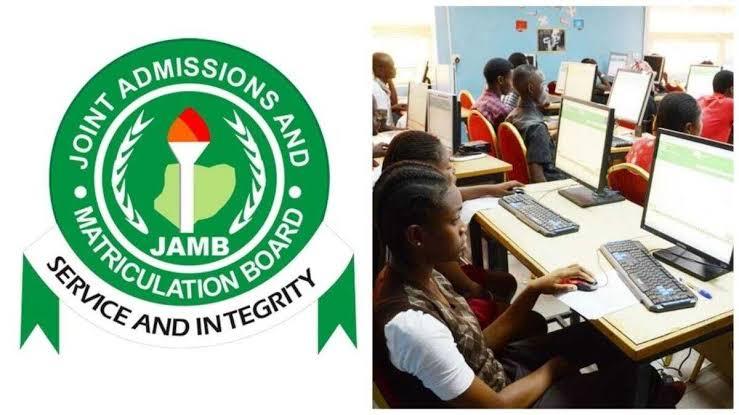Imo State, situated in Nigeria’s South-East region, plays a pivotal role in the country’s socio-economic and political framework. Known for its rich cultural heritage, academic institutions, and vibrant entrepreneurial population, the state is actively implementing strategies to accelerate its development through effective public financial management.
One critical pillar of Imo’s development lies in how it sources, allocates, and utilizes funds. Through robust annual budgets, internal revenue generation mechanisms, and strategic sectoral investments, the state seeks to foster economic growth and improve the welfare of its people.
In this detailed blog post, we explore everything about Imo State’s allocation — from its revenue sources to budgetary priorities, sectoral spending, and the fiscal strategies that underpin sustainable development.
Understanding How State Allocation Works in Nigeria
To appreciate Imo State’s financial strategy, one must first understand the broader fiscal structure in Nigeria. Every month, the Federation Account Allocation Committee (FAAC) disburses revenue among the federal, state, and local governments. This revenue is collected primarily from crude oil sales, Value Added Tax (VAT), customs duties, and other taxes.
The allocation formula considers several parameters such as population, landmass, education needs, and revenue-generating capacity. For states like Imo, these monthly inflows serve as the bedrock of governance, enabling the implementation of policies, infrastructure projects, and public services.
Imo State’s Revenue Profile: Where the Money Comes From
Imo State generates revenue through three major sources:
1. Statutory Allocations from the Federal Government
Statutory allocations are the monthly payments made by the federal government to states. These are derived from the consolidated revenue shared through FAAC and are usually the largest source of revenue for most Nigerian states, including Imo.
2. Internally Generated Revenue (IGR)
IGR includes taxes, levies, and fines collected within the state. The Imo State Internal Revenue Service (IIRS) is responsible for coordinating these collections. Over the years, the IIRS has been reformed to increase efficiency, broaden the tax base, and improve compliance.
The state government has adopted innovative digital tools, enforced stricter compliance policies, and launched public sensitization programs to increase IGR.
3. Other Revenue Sources
These include development grants, bilateral or multilateral loans, and investments from public-private partnerships. These funds help finance capital-intensive projects like roads, schools, hospitals, and industrial parks.
The 2024 Budget: Budget of Renewed Economic Growth
Governor Hope Uzodimma presented the 2024 Imo State budget, aptly titled “Budget of Renewed Economic Growth.” The budget was designed to expand infrastructure, support social services, and stimulate job creation.
Key Highlights:
-
Total Budget Size: ₦592.2 billion
-
Capital Expenditure: ₦491.2 billion (82.9%)
-
Recurrent Expenditure: ₦100.99 billion (17.1%)
This clearly capital-biased budget demonstrated the administration’s commitment to long-term development. Massive investments were directed toward rebuilding decayed infrastructure, supporting the health and education sectors, and creating jobs through industrial hubs and skill acquisition programs.
The 2024 budget also focused on fiscal sustainability, security enhancement, and improving public service delivery.
The 2025 Budget: Budget of Renewed Economic Expansion
Building on the success of 2024, the 2025 budget, titled “Budget of Renewed Economic Expansion,” marked another major leap in fiscal ambition and planning. Presented in December 2024 and signed into law in early 2025, the budget totaled ₦807 billion.
Budget Breakdown:
-
Capital Expenditure: ₦694.8 billion (86.09%)
-
Recurrent Expenditure: ₦112.3 billion (13.91%)
This budget was crafted to scale up economic expansion, bolster industrialization, and improve welfare across all 27 local government areas. The allocation indicates an aggressive push toward infrastructure development and human capital enhancement.
Sectoral Allocation: Where the Money Goes
A closer look at the 2025 budget reveals Imo State’s development priorities. Below are the major sectors and their respective allocations:
-
Power and Electrification – ₦74 billion
Investments in solar power projects, rural electrification, and mini-grid installations to reduce energy poverty. -
Agriculture and Food Security – ₦50 billion
Development of mechanized farming, agribusiness incubation hubs, and rural cooperatives to boost local food production and employment. -
Education – ₦49 billion
Rehabilitation of schools, retraining of teachers, and expansion of technical and vocational education. -
Health – ₦31 billion
Upgrading general hospitals, establishing new primary health centers, and increasing access to affordable healthcare. -
Transport and Infrastructure – Part of a larger ₦200 billion allocation
Construction and dualization of major roads, bridges, and flyovers across the state. -
Youth and Women Empowerment – ₦12 billion
Grants, loans, and capacity-building programs to support entrepreneurship and reduce unemployment. -
Digital Economy and Innovation – ₦10 billion
Establishing innovation hubs, broadband infrastructure, and technology parks to encourage tech startups and digital skills acquisition.
These allocations show the state’s commitment to inclusive growth and economic diversification.
Debt Management and Fiscal Discipline
Imo State has consistently prioritized fiscal discipline in its budgeting process. Debt servicing remains an essential component of its financial obligations. However, Governor Uzodimma’s administration insists that all loans must be tied to capital projects that can eventually pay for themselves.
In the 2025 budget, specific provisions were made to manage and reduce the state’s debt burden through improved IGR, cost-cutting measures, and performance-based budgeting.
Enhancing Internally Generated Revenue (IGR)
To reduce over-dependence on federal allocations, the Imo State government is focusing heavily on growing its IGR base. Some of the reforms include:
-
Expanding the tax net by formalizing the informal sector.
-
Enhancing the capacity of the IIRS through technology adoption.
-
Offering tax reliefs to compliant businesses and individuals.
-
Introducing efficient collection mechanisms for property taxes, levies, and business permits.
These efforts are expected to double the state’s IGR over the next three fiscal years.
Transparency and Accountability in Governance
One of the strengths of Imo’s public financial management is its commitment to transparency. The state government has embraced open governance by:
-
Publishing annual budgets, audit reports, and quarterly budget performance reports.
-
Engaging civil society organizations and stakeholders in the budget preparation and monitoring process.
-
Launching citizen feedback platforms to improve service delivery.
These measures enhance accountability, reduce corruption, and build public trust.
Challenges and the Road Ahead
Challenges
Despite its ambitious plans, Imo faces several challenges:
-
Overreliance on federal allocations.
-
Infrastructural decay in some rural areas.
-
Limited access to credit for small businesses.
-
Youth unemployment and underemployment.
Opportunities
To address these, the state plans to:
-
Foster more public-private partnerships (PPPs) to drive infrastructure growth.
-
Attract foreign direct investment by improving the ease of doing business.
-
Focus on industrialization and rural development.
-
Empower youths and women through sustainable programs.
Conclusion
Imo State’s approach to allocation, budget planning, and fiscal reform reflects a serious commitment to development. With significant budgetary allocations toward infrastructure, education, health, agriculture, and youth empowerment, the state is laying a solid foundation for inclusive and sustainable growth.
By strengthening internal revenue generation, maintaining transparency, and prioritizing key sectors, Imo is positioning itself not just as an economic hub in the South-East, but as a model for smart fiscal governance in Nigeria.
The journey ahead may still pose challenges, but the foundation laid through the 2024 and 2025 budgets promises a future of opportunities, prosperity, and shared progress for all Imolites.

















